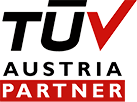KEY BENEFITS OF ISO/FDIS 50005 IMPLEMENTATION
ISO/FDIS 50005 “Energy Management Systems – Step-by-Step Implementation Guidelines”. This document provides guidance for organizations. On implementing a step-by-step approach to adopting an energy management system (EnMS). This phased approach is designed to support and simplify the adoption of an EnMS. For all types of organizations and in particular for small and medium-sized organizations. A key benefit of implementing ISO/FDIS 50005 is that this standard provides guidance on the use of twelve basic elements with four levels of maturity. For each element to create and implement as well as maintain and improve an energy management system.
Following a systematic approach with appropriate efforts and considering their resources and context, which leads to improved energy efficiency. This allows the user of this document to implement a step-by-step approach to achieve the level of energy management that meets their goals. It also creates a solid foundation that can be later and can be expanded in accordance with the requirements of ISO 50001: 2018.
Benefits of phased implementation of the Energy Management System
Implementing an EnMS in an organization can be a challenge. Organizations may have limited resources (e.g., staff knowledge and availability) to successfully implement an EnMS. A phased implementation provides several advantages to an organization. The phased implementation described in this document provides the flexibility that allows an organization to:
- 1. Decide on the scale and pace of implementation of energy management system. In accordance with available resources and needs of the organization;
- 2. Decide on target elements and desired level of maturity;
- 3. start with areas that indicate the greatest potential. To improve energy efficiency and return on investment or align with current operational practices;
- 4. Stimulate a positive culture and energy management;
- 5. To provide simple and/or inexpensive energy performance improvements. And related energy savings, also emission reductions and other benefits;
- 6. Achieve first successes to increase confidence. And in this way to provide commitment and support for further development of the energy management system;
- 7. To create a solid foundation for expansion of the existing energy management system in accordance with the requirements of ISO 50001



